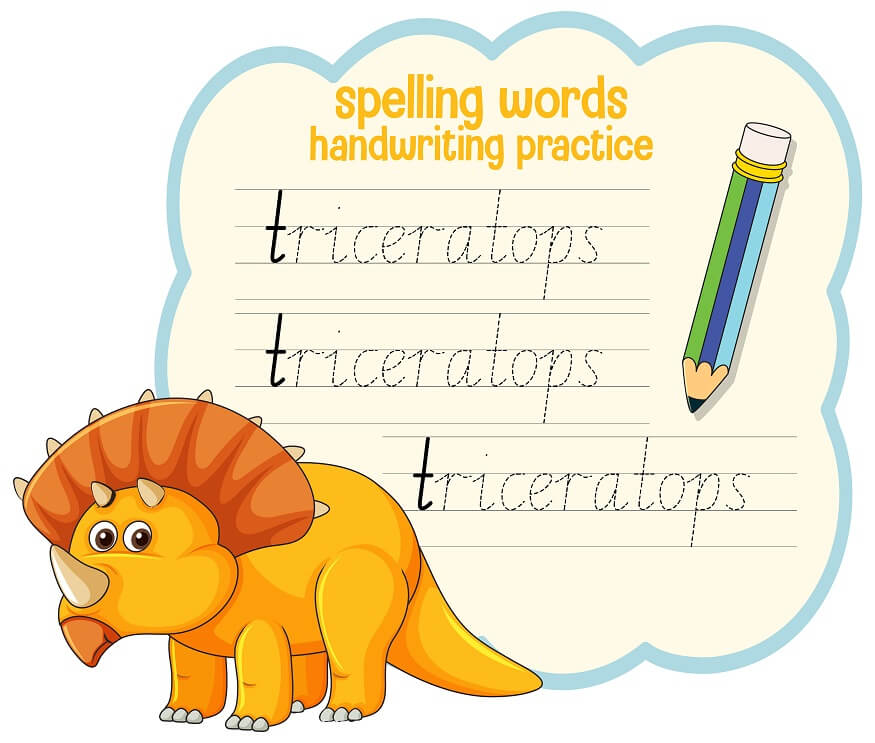How to Improve Handwriting: 5 Essential Tips

Cultivating legible handwriting is essential for every student, but it is not always easy to accomplish. Many parents and teachers struggle with guiding children towards achieving a neat and legible handwriting style. It takes practice, effort and determination. In this blog, we cover some of the most effective ways to improve handwriting for students, as well as some handy tips for parents and teachers. Let’s dive in!
Understanding the Importance of Good Handwriting
In India, good handwriting is especially important for students as most competitive examinations must be handwritten. Therefore, developing a neat and legible handwriting style at an early age is important for all children.
A recent research experiment by Frontiers in Psychology has proven that handwriting activity aids in improved learning. The research experiment found that brain connectivity patterns were more elaborate when students took written notes as compared to typing notes on a keyboard. The connectivity patterns highlighted were in areas of the brain that are crucial to memory formation and encoding new information, thus proving that the act of writing by hand can help students learn better.
Five Ways to Improve Handwriting for Students
Choose the Right Tools
The kind of pen or pencil that a child uses will greatly impact the quality of their handwriting. Small pencils that are specially designed to fit into young children’s hands are best for young children who have limited control over writing instruments. As children grow and develop their fine motor skills, transitioning to ink pens and ballpoint pens will help them build writing dexterity and speed.
Practice Consistently
Muscle memory is strengthened through practice sessions that are frequent and increasingly specific. When teaching young children to write, draw their attention to the formation of the letters, as well as spaces between the words and the sentences. Dedicated time each day to practise writing and perfecting letters and numbers will greatly help young writers to master a neat and legible style.
Focus on Posture and Positioning
The correct posture can help in achieving a good handwriting style. Students should have both their feet touching the floor, with proper support for their backs. Positioning the paper or writing board can also result in a more legible output. Angling the paper slightly to the left will help right-handed writers, while left-handed writers should angle the paper slightly to the right. This positioning of the paper at a slant enhances the posture of the wrist and shoulders.
Use the Correct Grip
Young children often struggle to grip a pen or pencil because their fine motor skills are not fully developed. To compensate for this, they may grip the writing instrument very tightly, and at unnatural angles. If not corrected early on, this can be habit-forming, and will be difficult to change once they are older. An incorrect grip can affect writing speeds, and cause hand fatigue.
Make Writing Fun!
Young children are easily distracted and get bored of focussing on one activity for extended periods of time. Adding a bit of fun to the process of practising handwriting will help them stay engaged for longer. Encourage them to use different writing instruments – like markers, mechanical pencils or even glitter pens. While teaching students how to write letters and numbers, use different colours to highlight the differences in heights and spaces, so that students will start to recognise the differences in size proportions.
Additional Tips for Handwriting Improvement
Incorporate Technology
There are several applications and online tools that can be used to enable students to practise and develop good handwriting. Since these tools are applied interactively, it becomes easier for the learners to receive real-time feedback on what they are doing.
Use Mnemonics
Games and Mnemonics are great ways for young children to remember details. One of the most popular mnemonics for handwriting is the “Sky, Grass, Dirt” method. This memory tool helps students remember the different zones of lined or ruled paper. The letters that go to the top line are in the ‘sky’, those that remain at the bottom line are in the ‘grass’ and those that have descended under the lines to the ‘dirt’.
Regular Assessment
Monitoring a student’s progress in handwriting is very important. Teachers and parents should occasionally monitor the improvements in students’ handwriting and highlight areas that require attention.
The process of achieving a good handwriting technique takes time, effort, and effective strategies. The identification of proper writing instruments, regular writing exercises, and the introduction of easy memory tips can greatly help young children develop a good handwriting style.
At Billabong High International School, we believe that holistic development in children occurs when parents and teachers work together to help children achieve their best potential. To learn more about our curriculum, visit our website or contact our admissions office today.








